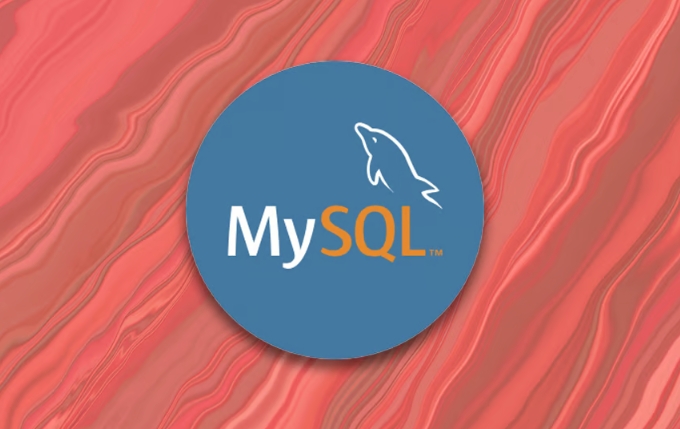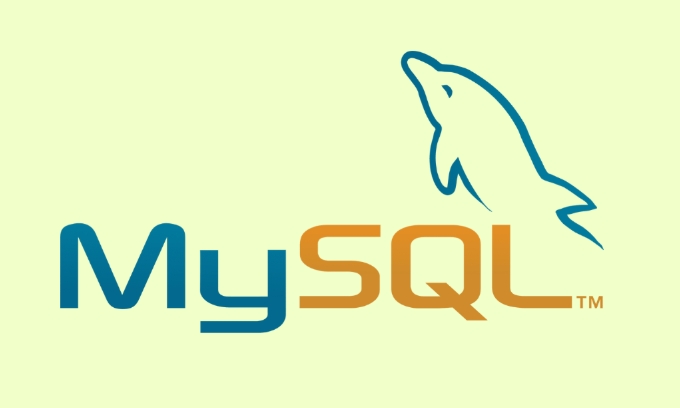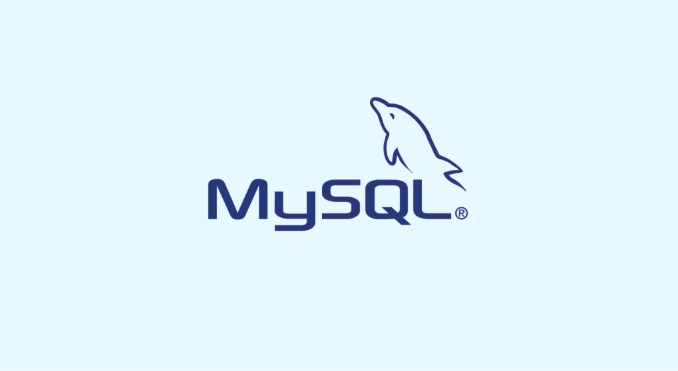The steps to install MySQL on Docker include: 1. Make sure Docker and docker-compose are installed; 2. Use the docker run command to quickly start the test instance and set the password; 3. Mount the data volume to prevent data loss after container deletion; 4. It is recommended to use the docker-compose.yml file management service for maintenance; 5. Pay attention to password settings, port mapping, version control, and character set configuration. Just follow the above order to successfully complete MySQL deployment on Docker.

Installing MySQL to Docker is not difficult, it can be completed in just a few steps. The key is to configure the parameters, mount the directory and set the password to avoid the data being lost or the database cannot be connected to the container once it restarts.

Preparation: Make sure Docker is installed
Before you begin, make sure that Docker is installed on your system. You can check it by following the command:

docker --version
If you return information similar to Docker version 24.xx , it means that it has been installed. If not, please download the installation package and install it according to your operating system.
In addition, it is recommended to install docker-compose , as it will be more convenient to configure it later.

The easiest way to start a MySQL container
If you just want to run a test MySQL instance quickly, you can start it directly with the following command:
docker run --name mysql-test -e MYSQL_ROOT_PASSWORD=yourpassword -d -p 3306:3306 mysql:latest
Explain a few key parameters:
-
--name: Give the container a name for easy management; -
-e MYSQL_ROOT_PASSWORD=...: Set the password of the root user; -
-d: run in the background; -
-p 3306:3306: Map the 3306 port of the host to 3306 of the container; -
mysql:latest: Use the latest version of the image.
After this execution, MySQL will be launched, and you can try connecting with the client.
More recommended practice: Mount data volumes to avoid data loss
Although the above method is simple, there is a problem: once the container is deleted, the data will be gone. To prevent this, it is best to mount the data directory.
You can do this:
docker run --name mysql-prod \ -e MYSQL_ROOT_PASSWORD=yourpassword \ -v /your/local/path/mysql/data:/var/lib/mysql \ -p 3306:3306 \ -d mysql:latest
Here is a -v parameter, which means mapping /var/lib/mysql in the container to a directory in your local area. Even if the container is deleted, the data is still retained locally.
Suggestion: Wait for a few minutes when running the first time, because it may take time to initialize the data for the first time in MySQL, especially after using persistent storage.
Use docker-compose to build more clearly
If you like to use configuration files to manage services, you can write a docker-compose.yml file, with the following content:
version: '3.8'
services:
mysql:
image: mysql:latest
container_name: mysql-server
environment:
MYSQL_ROOT_PASSWORD: yourpassword
Volumes:
- ./mysql-data:/var/lib/mysql
Ports:
- "3306:3306"
restart: unless-stoppedThen execute in the same directory:
docker-compose up -d
The advantage of this method is that it is clear structure, easy to maintain, and is suitable for long-term operating environments.
Notes and FAQs
- Don't forget the password : If you forget what password you set, you have to rebuild the container.
- Port conflict problem : If MySQL is already running on the machine, it will prompt the port to occupy, and you can change the mapping to
3307:3306. - Version control : It is recommended to specify a specific version number in the production environment, such as
mysql:8.0, rather thanlatest. - Character set settings : Sometimes you will encounter Chinese garbled code. You can add
--character-set-server=utf8mb4and--collation-server=utf8mb4_unicode_cito the startup command.
Basically that's it. The operation is not complicated, but some details are easy to ignore, especially the data mount and password settings.
The above is the detailed content of How to install MySQL on Docker. For more information, please follow other related articles on the PHP Chinese website!

Hot AI Tools

Undress AI Tool
Undress images for free

Undresser.AI Undress
AI-powered app for creating realistic nude photos

AI Clothes Remover
Online AI tool for removing clothes from photos.

Clothoff.io
AI clothes remover

Video Face Swap
Swap faces in any video effortlessly with our completely free AI face swap tool!

Hot Article

Hot Tools

Notepad++7.3.1
Easy-to-use and free code editor

SublimeText3 Chinese version
Chinese version, very easy to use

Zend Studio 13.0.1
Powerful PHP integrated development environment

Dreamweaver CS6
Visual web development tools

SublimeText3 Mac version
God-level code editing software (SublimeText3)
 Connecting to MySQL Database Using the Command Line Client
Jul 07, 2025 am 01:50 AM
Connecting to MySQL Database Using the Command Line Client
Jul 07, 2025 am 01:50 AM
The most direct way to connect to MySQL database is to use the command line client. First enter the mysql-u username -p and enter the password correctly to enter the interactive interface; if you connect to the remote database, you need to add the -h parameter to specify the host address. Secondly, you can directly switch to a specific database or execute SQL files when logging in, such as mysql-u username-p database name or mysql-u username-p database name
 Handling character sets and collations issues in MySQL
Jul 08, 2025 am 02:51 AM
Handling character sets and collations issues in MySQL
Jul 08, 2025 am 02:51 AM
Character set and sorting rules issues are common when cross-platform migration or multi-person development, resulting in garbled code or inconsistent query. There are three core solutions: First, check and unify the character set of database, table, and fields to utf8mb4, view through SHOWCREATEDATABASE/TABLE, and modify it with ALTER statement; second, specify the utf8mb4 character set when the client connects, and set it in connection parameters or execute SETNAMES; third, select the sorting rules reasonably, and recommend using utf8mb4_unicode_ci to ensure the accuracy of comparison and sorting, and specify or modify it through ALTER when building the library and table.
 Implementing Transactions and Understanding ACID Properties in MySQL
Jul 08, 2025 am 02:50 AM
Implementing Transactions and Understanding ACID Properties in MySQL
Jul 08, 2025 am 02:50 AM
MySQL supports transaction processing, and uses the InnoDB storage engine to ensure data consistency and integrity. 1. Transactions are a set of SQL operations, either all succeed or all fail to roll back; 2. ACID attributes include atomicity, consistency, isolation and persistence; 3. The statements that manually control transactions are STARTTRANSACTION, COMMIT and ROLLBACK; 4. The four isolation levels include read not committed, read submitted, repeatable read and serialization; 5. Use transactions correctly to avoid long-term operation, turn off automatic commits, and reasonably handle locks and exceptions. Through these mechanisms, MySQL can achieve high reliability and concurrent control.
 Managing Character Sets and Collations in MySQL
Jul 07, 2025 am 01:41 AM
Managing Character Sets and Collations in MySQL
Jul 07, 2025 am 01:41 AM
The setting of character sets and collation rules in MySQL is crucial, affecting data storage, query efficiency and consistency. First, the character set determines the storable character range, such as utf8mb4 supports Chinese and emojis; the sorting rules control the character comparison method, such as utf8mb4_unicode_ci is case-sensitive, and utf8mb4_bin is binary comparison. Secondly, the character set can be set at multiple levels of server, database, table, and column. It is recommended to use utf8mb4 and utf8mb4_unicode_ci in a unified manner to avoid conflicts. Furthermore, the garbled code problem is often caused by inconsistent character sets of connections, storage or program terminals, and needs to be checked layer by layer and set uniformly. In addition, character sets should be specified when exporting and importing to prevent conversion errors
 Using Common Table Expressions (CTEs) in MySQL 8
Jul 12, 2025 am 02:23 AM
Using Common Table Expressions (CTEs) in MySQL 8
Jul 12, 2025 am 02:23 AM
CTEs are a feature introduced by MySQL8.0 to improve the readability and maintenance of complex queries. 1. CTE is a temporary result set, which is only valid in the current query, has a clear structure, and supports duplicate references; 2. Compared with subqueries, CTE is more readable, reusable and supports recursion; 3. Recursive CTE can process hierarchical data, such as organizational structure, which needs to include initial query and recursion parts; 4. Use suggestions include avoiding abuse, naming specifications, paying attention to performance and debugging methods.
 Strategies for MySQL Query Performance Optimization
Jul 13, 2025 am 01:45 AM
Strategies for MySQL Query Performance Optimization
Jul 13, 2025 am 01:45 AM
MySQL query performance optimization needs to start from the core points, including rational use of indexes, optimization of SQL statements, table structure design and partitioning strategies, and utilization of cache and monitoring tools. 1. Use indexes reasonably: Create indexes on commonly used query fields, avoid full table scanning, pay attention to the combined index order, do not add indexes in low selective fields, and avoid redundant indexes. 2. Optimize SQL queries: Avoid SELECT*, do not use functions in WHERE, reduce subquery nesting, and optimize paging query methods. 3. Table structure design and partitioning: select paradigm or anti-paradigm according to read and write scenarios, select appropriate field types, clean data regularly, and consider horizontal tables to divide tables or partition by time. 4. Utilize cache and monitoring: Use Redis cache to reduce database pressure and enable slow query
 Designing a Robust MySQL Database Backup Strategy
Jul 08, 2025 am 02:45 AM
Designing a Robust MySQL Database Backup Strategy
Jul 08, 2025 am 02:45 AM
To design a reliable MySQL backup solution, 1. First, clarify RTO and RPO indicators, and determine the backup frequency and method based on the acceptable downtime and data loss range of the business; 2. Adopt a hybrid backup strategy, combining logical backup (such as mysqldump), physical backup (such as PerconaXtraBackup) and binary log (binlog), to achieve rapid recovery and minimum data loss; 3. Test the recovery process regularly to ensure the effectiveness of the backup and be familiar with the recovery operations; 4. Pay attention to storage security, including off-site storage, encryption protection, version retention policy and backup task monitoring.
 Optimizing complex JOIN operations in MySQL
Jul 09, 2025 am 01:26 AM
Optimizing complex JOIN operations in MySQL
Jul 09, 2025 am 01:26 AM
TooptimizecomplexJOINoperationsinMySQL,followfourkeysteps:1)EnsureproperindexingonbothsidesofJOINcolumns,especiallyusingcompositeindexesformulti-columnjoinsandavoidinglargeVARCHARindexes;2)ReducedataearlybyfilteringwithWHEREclausesandlimitingselected






